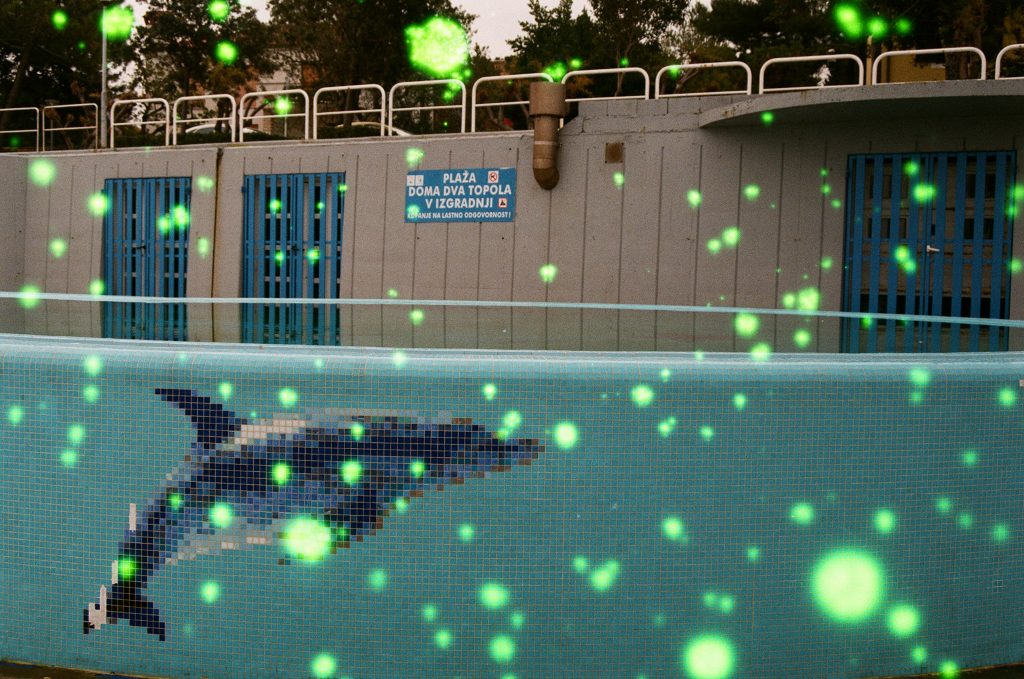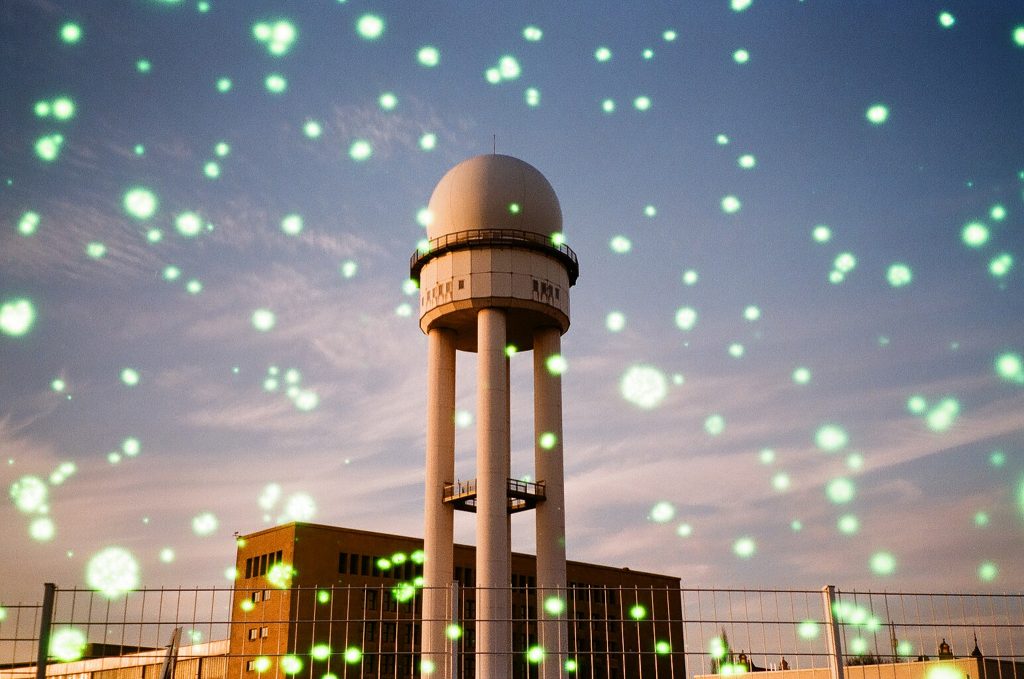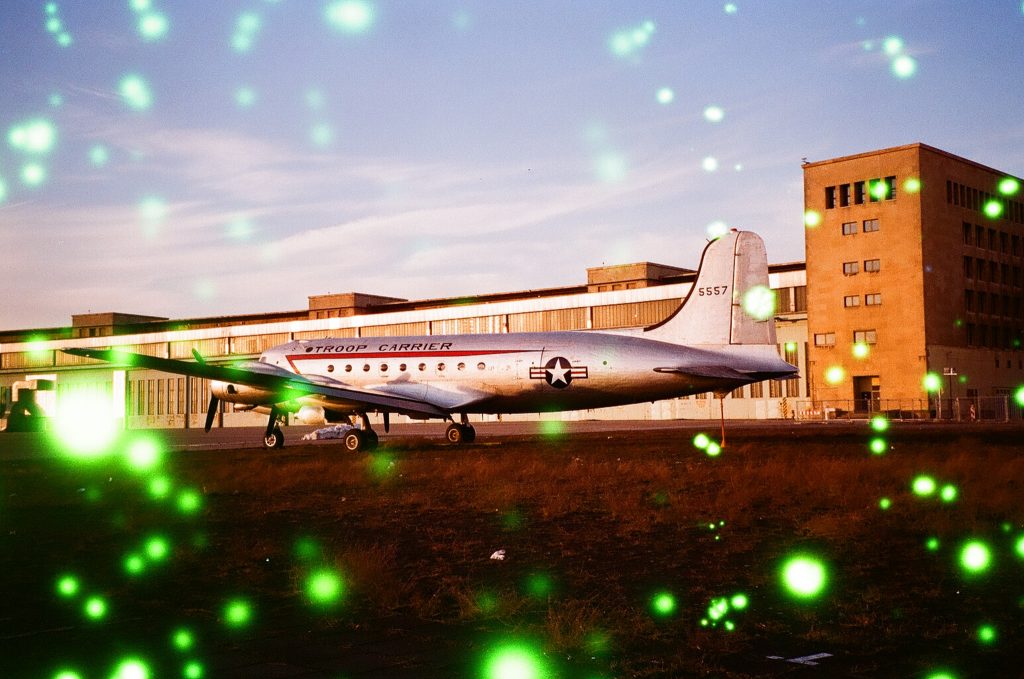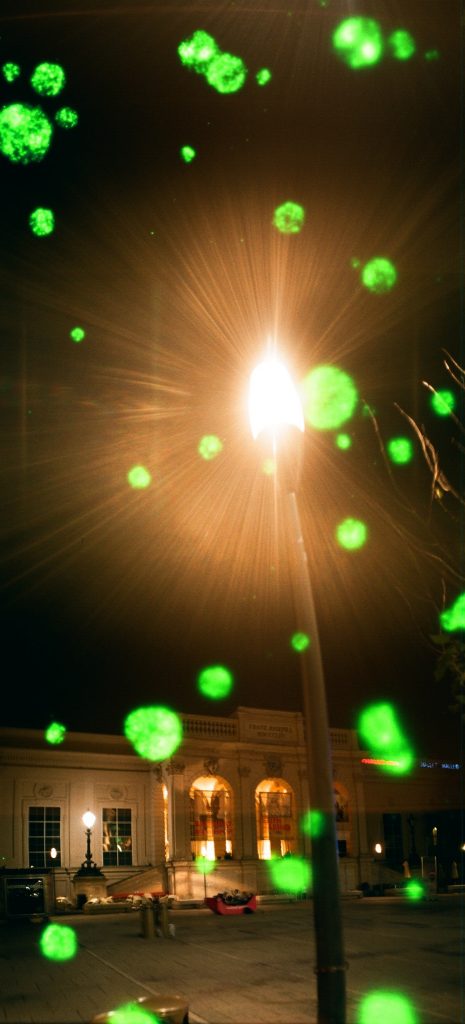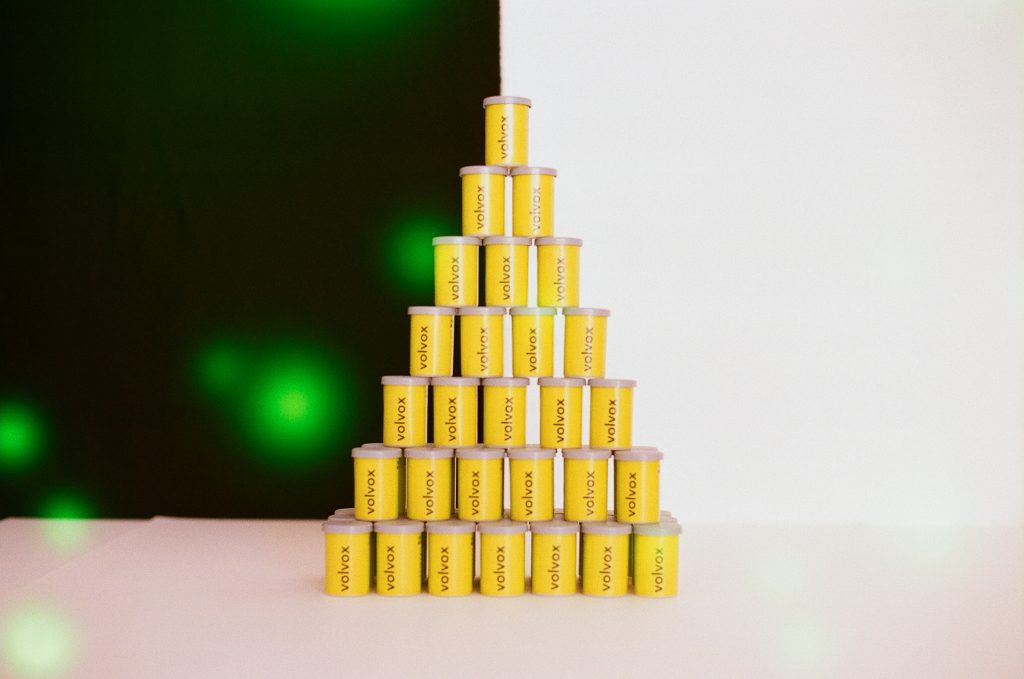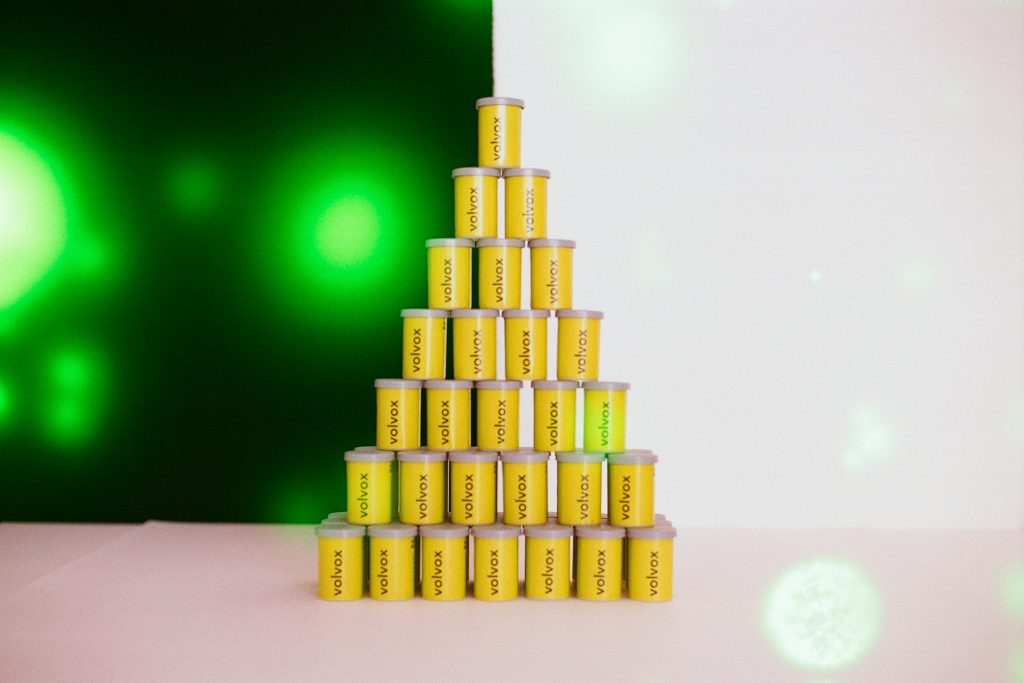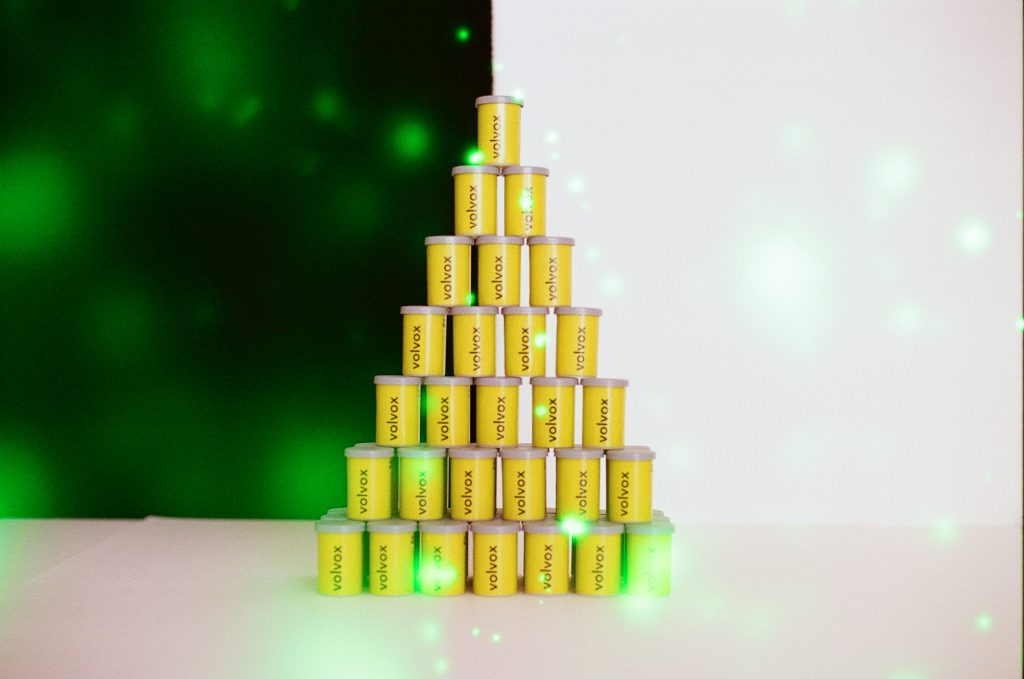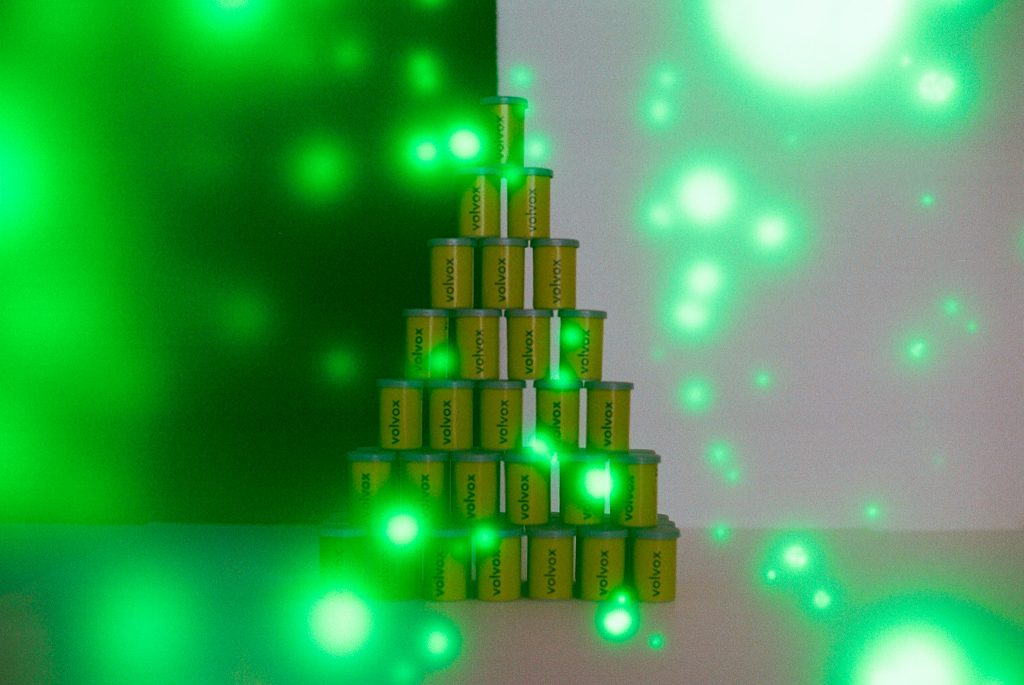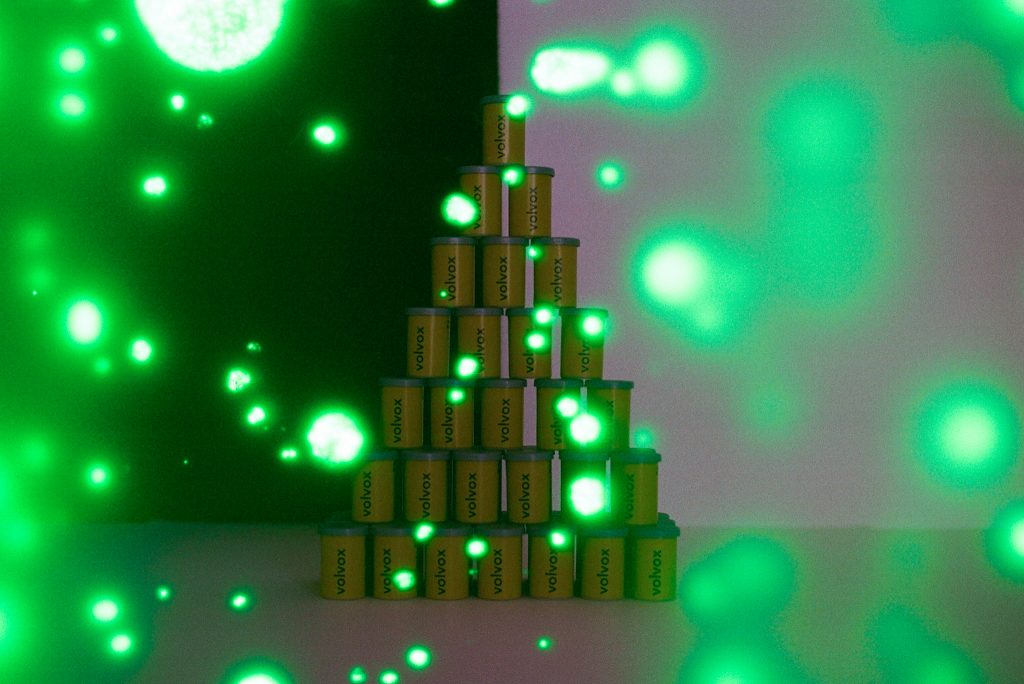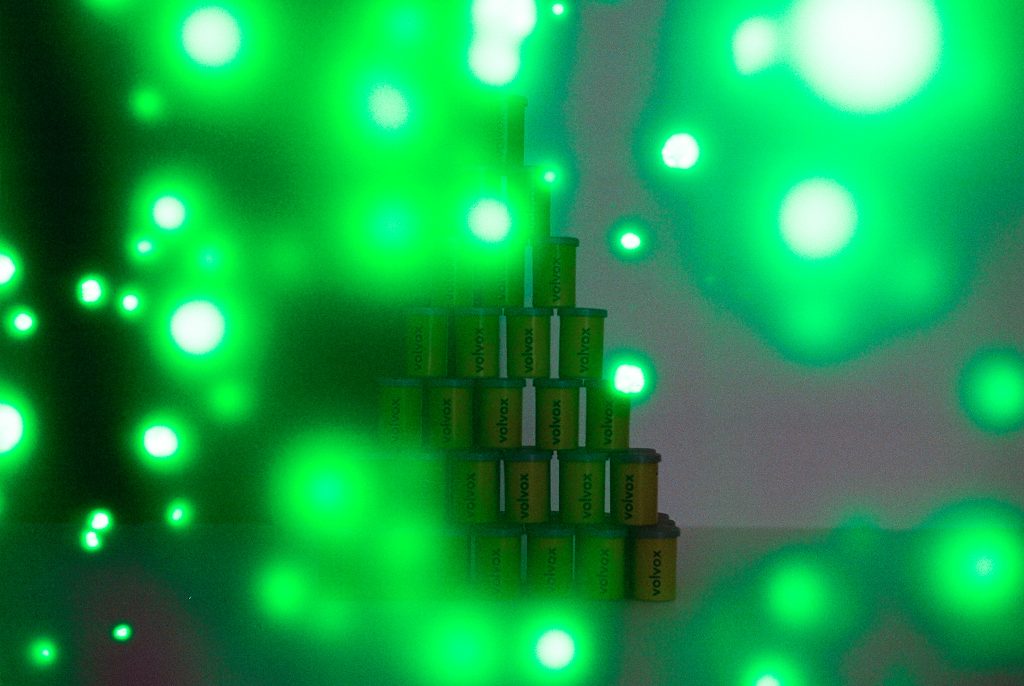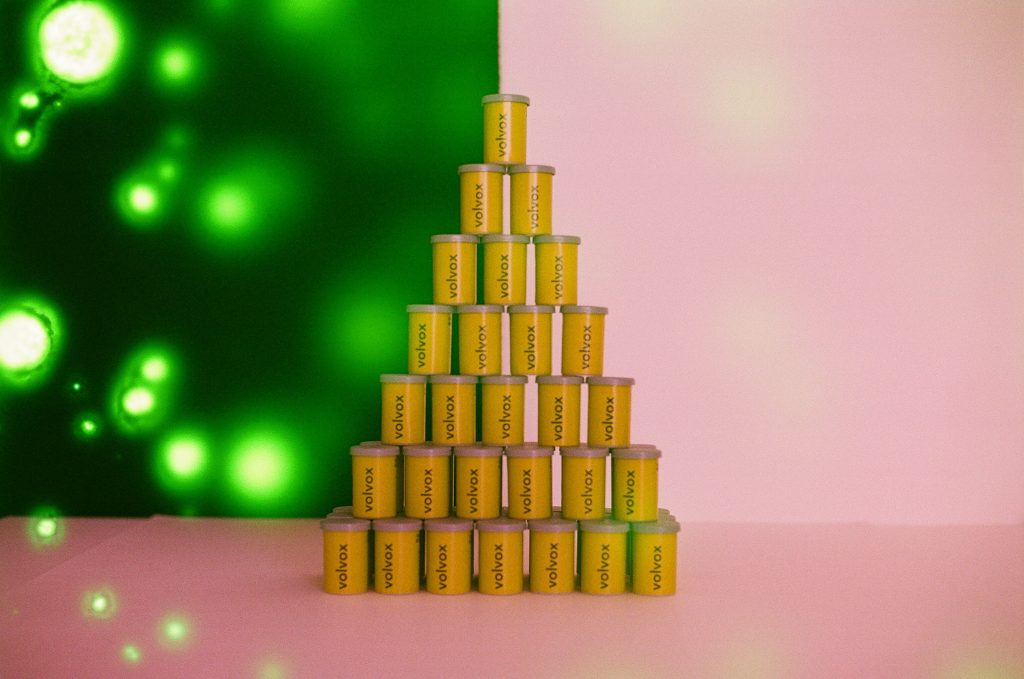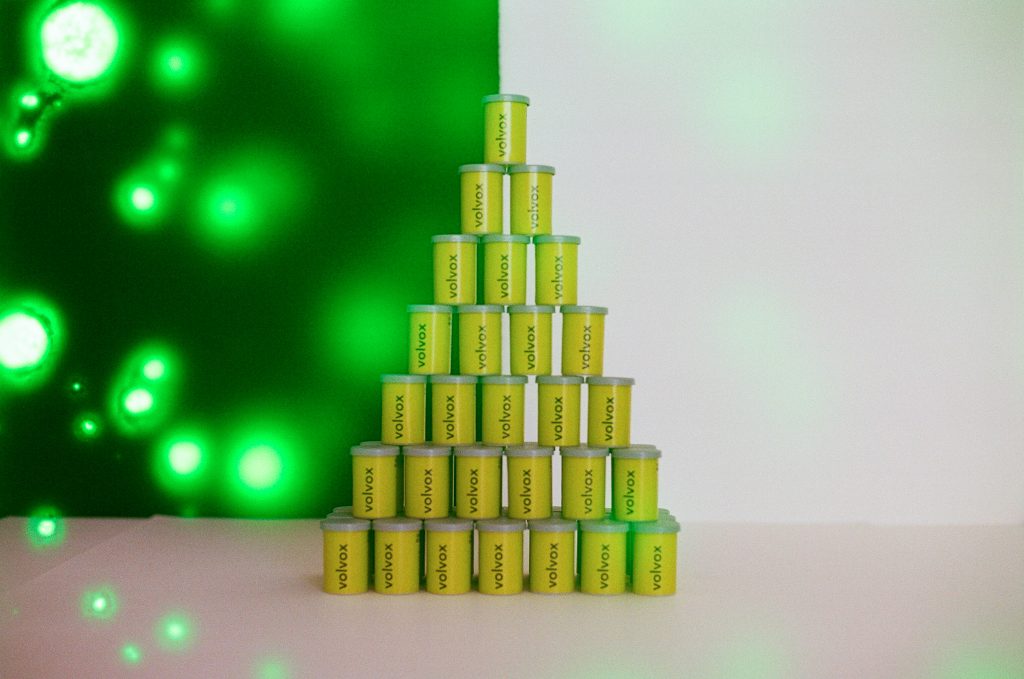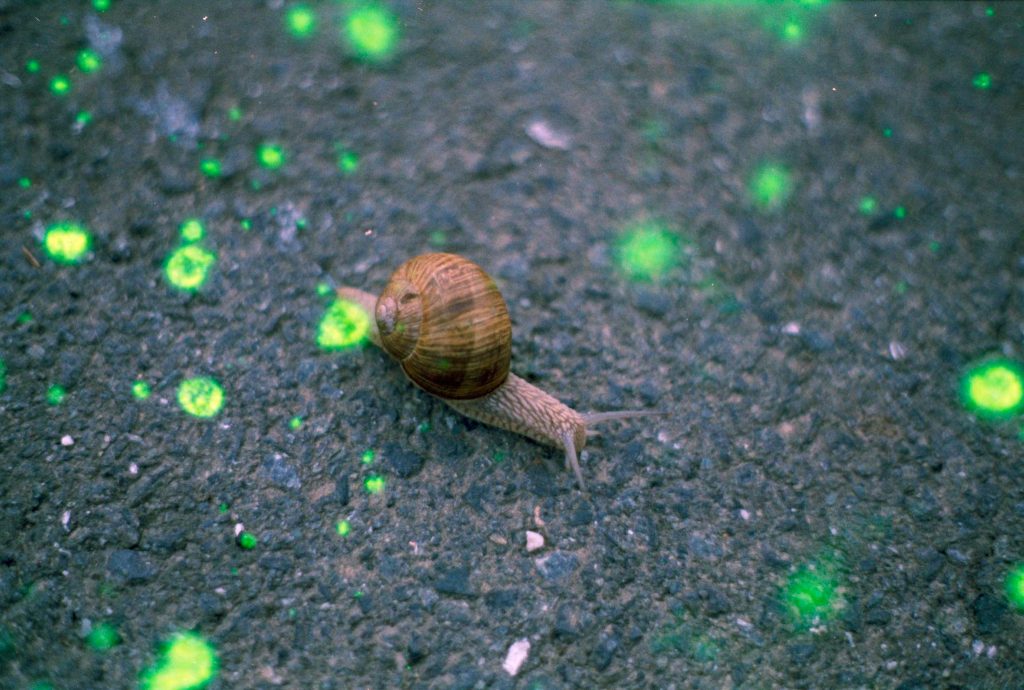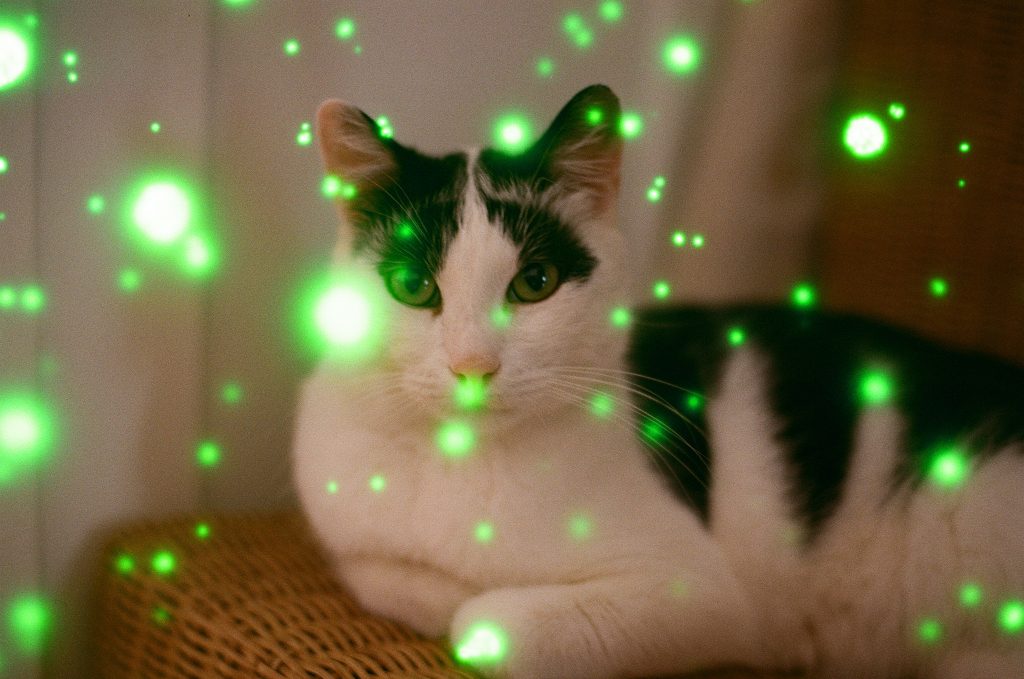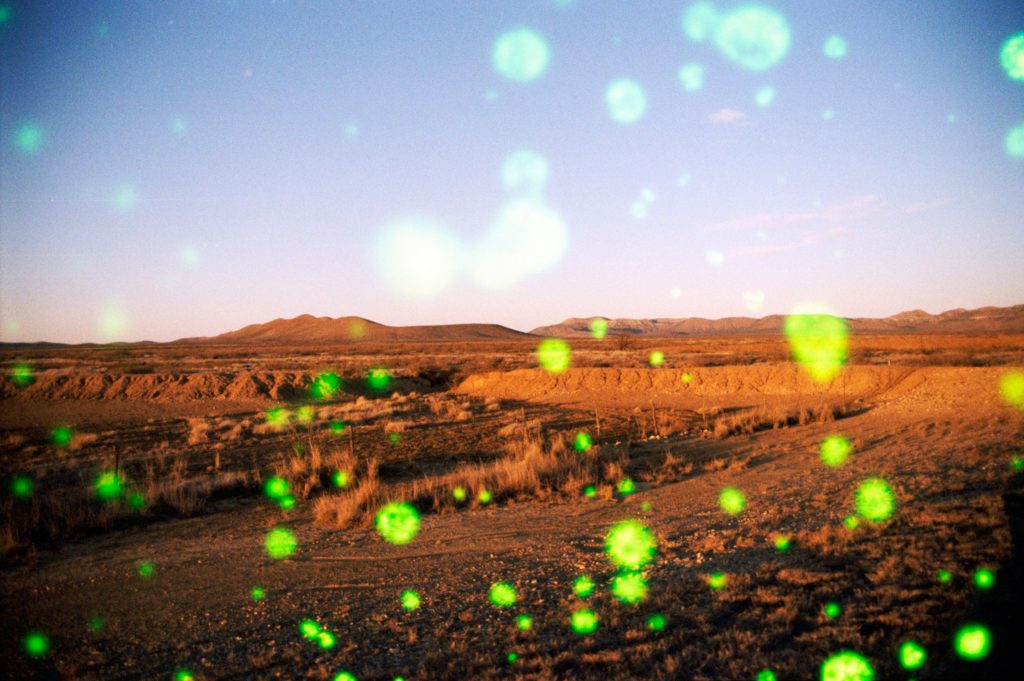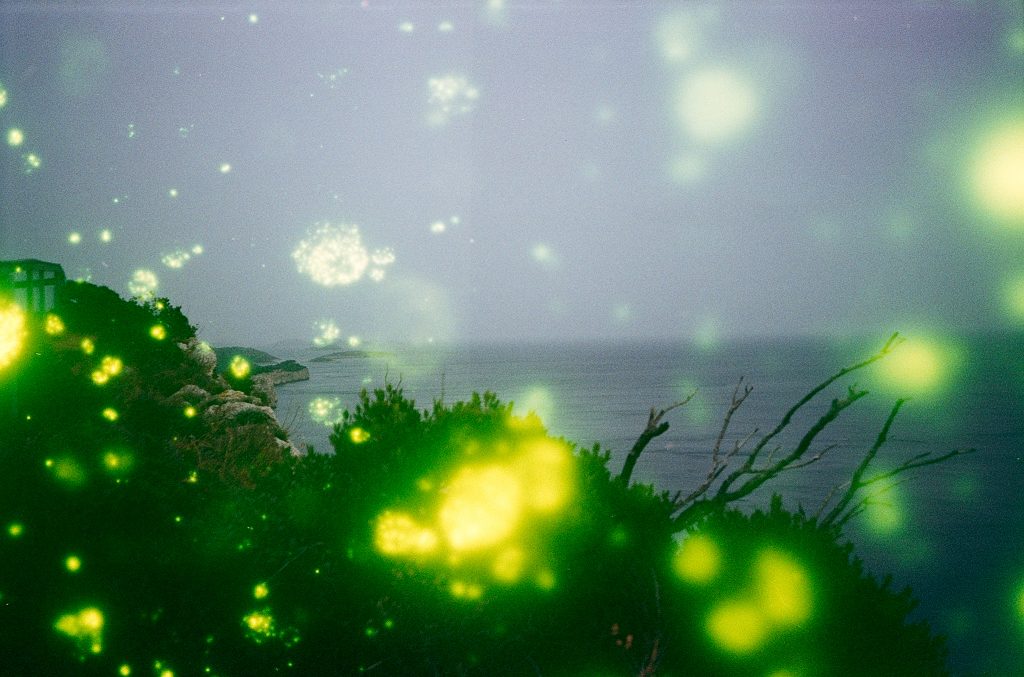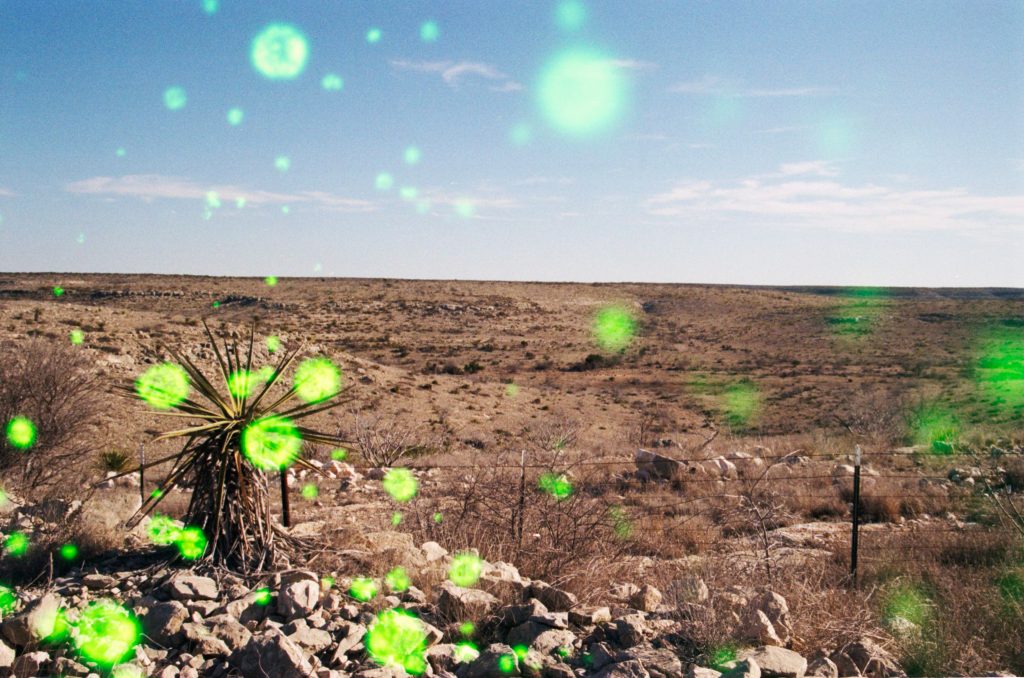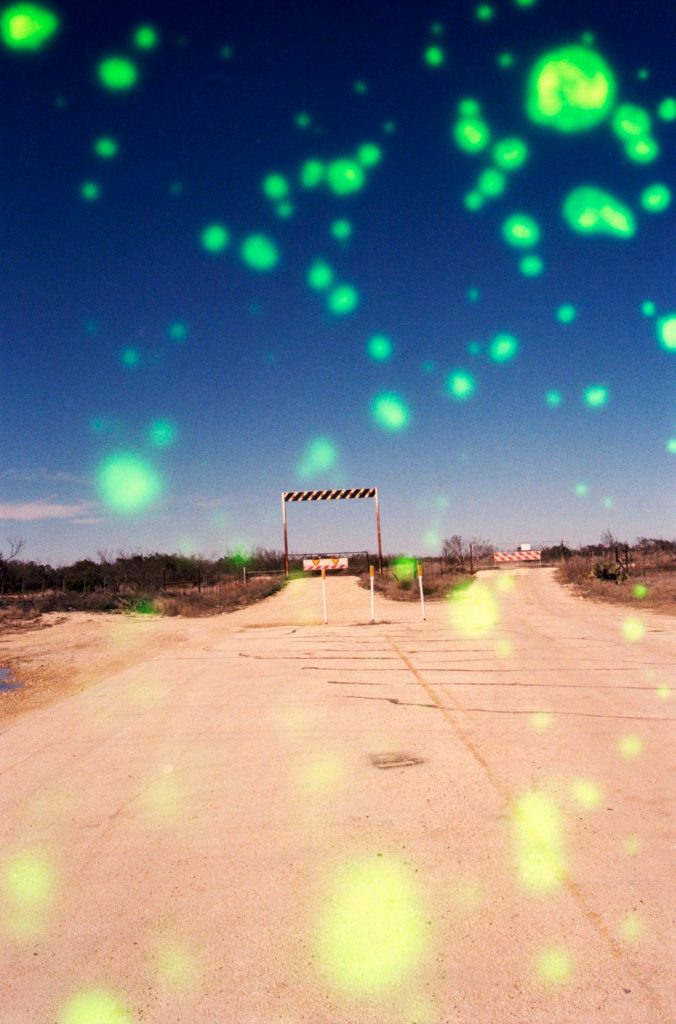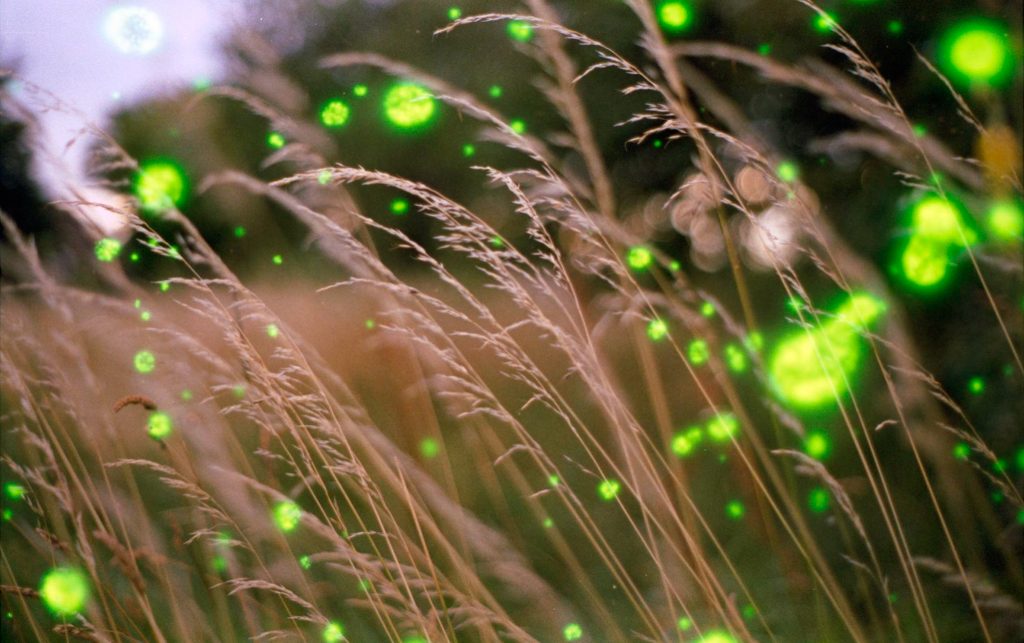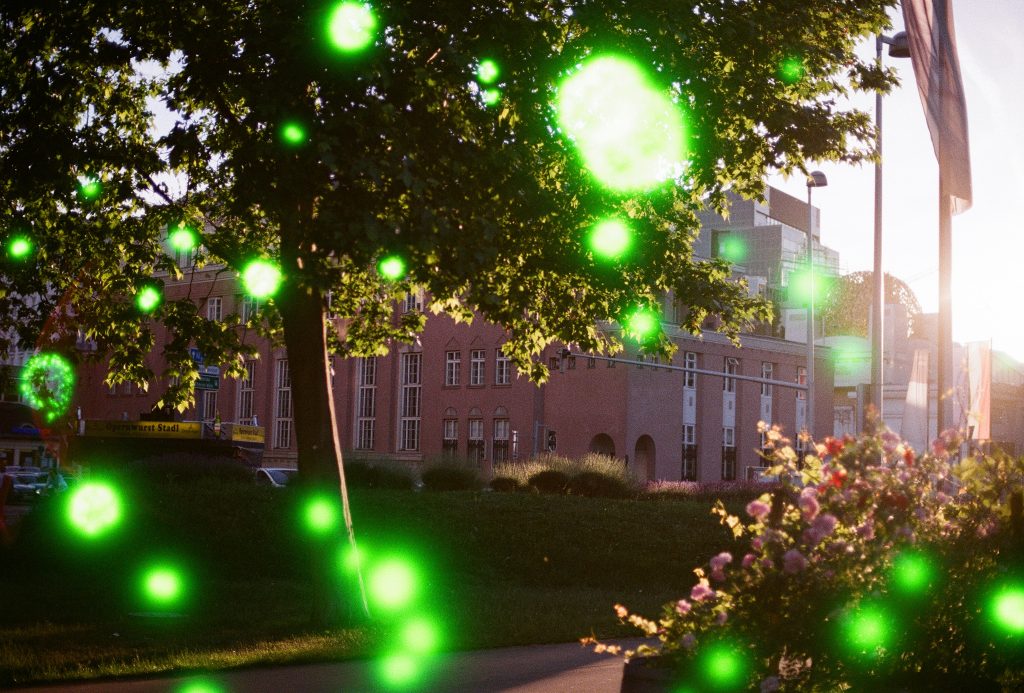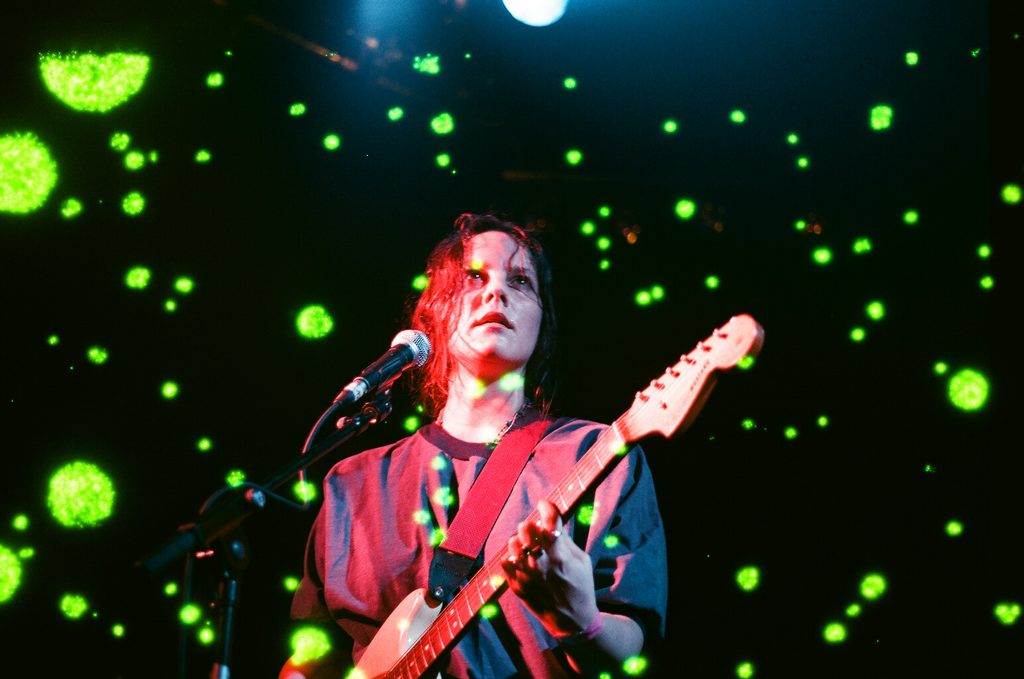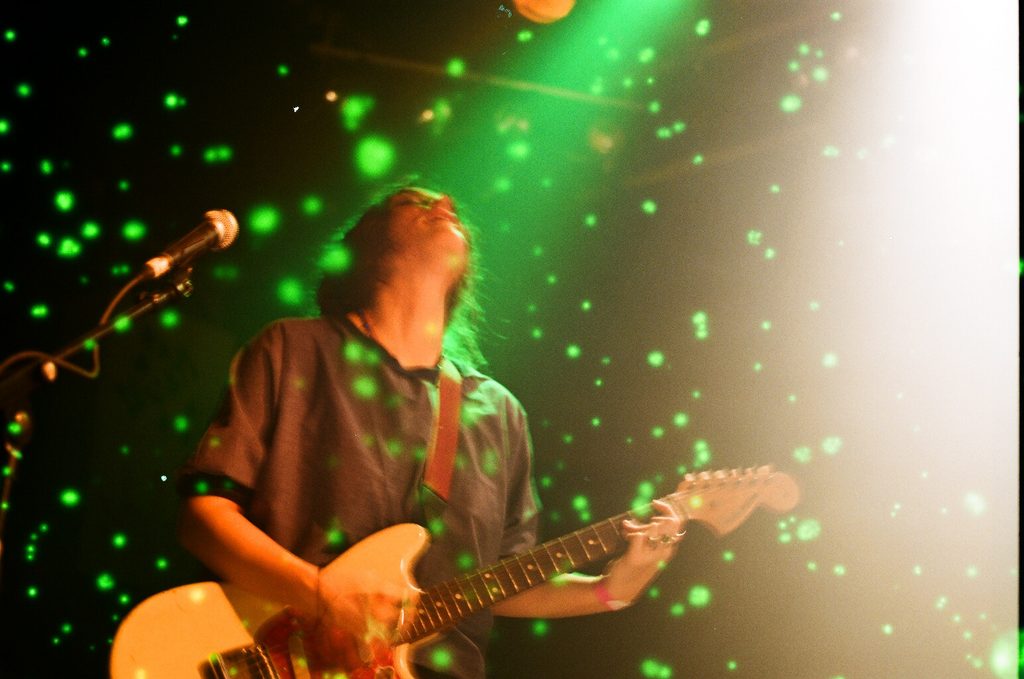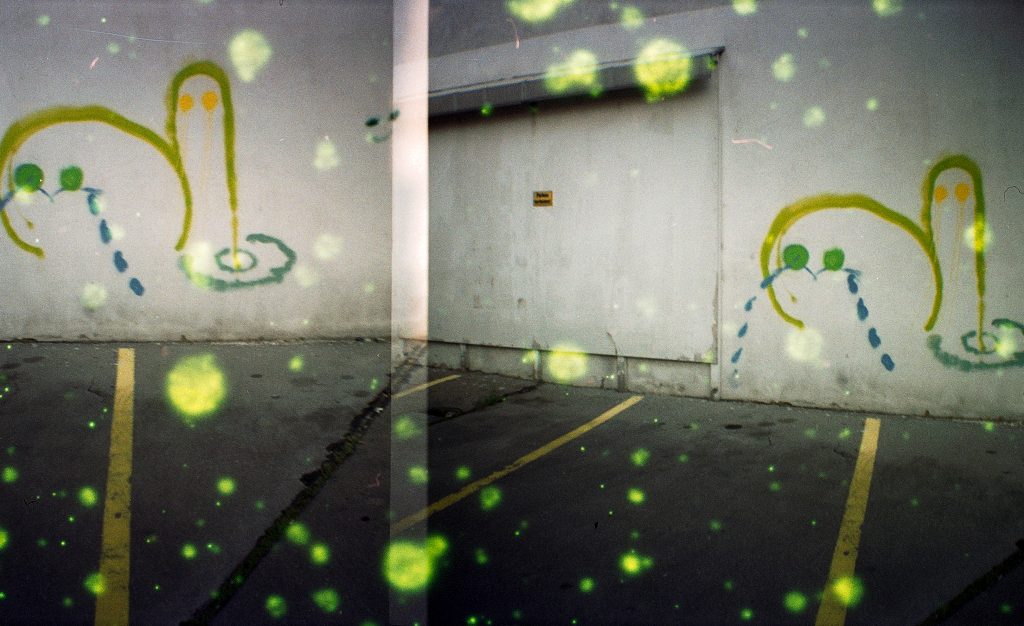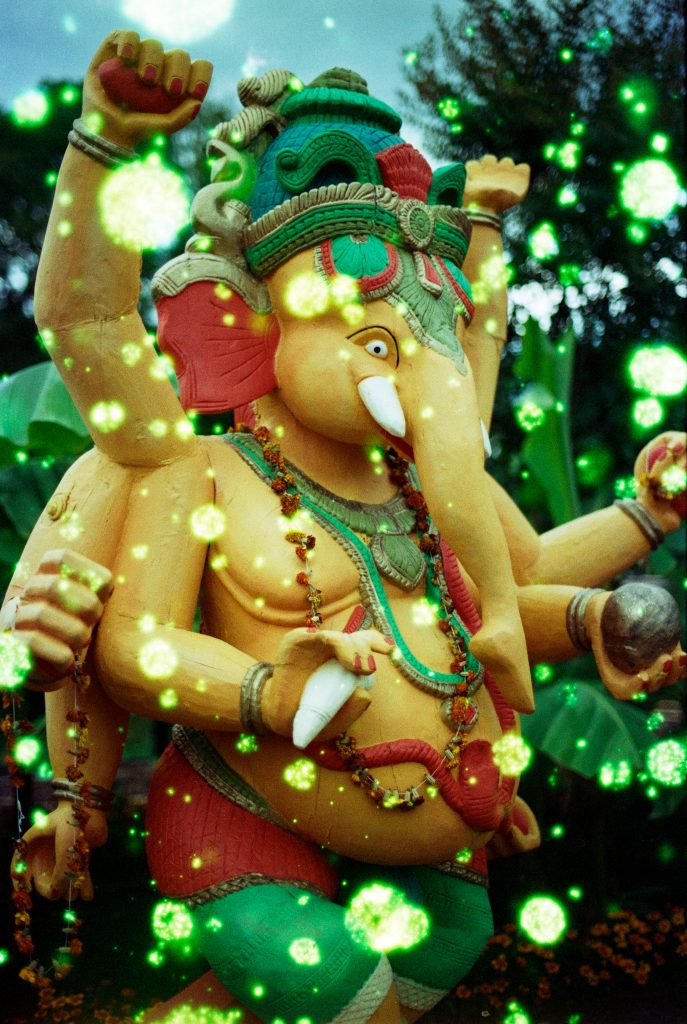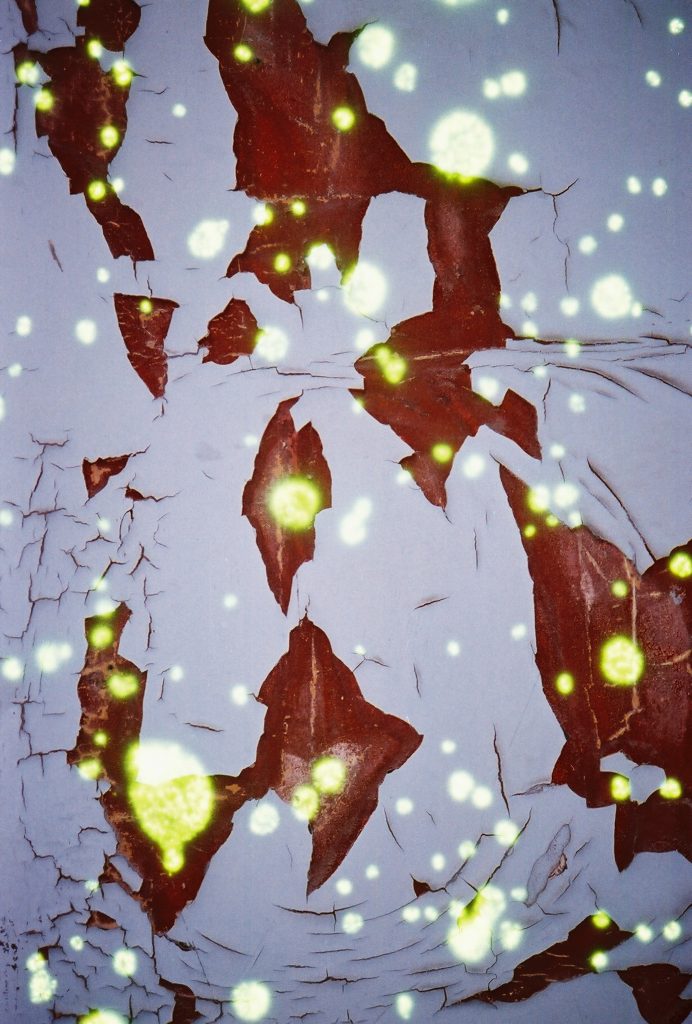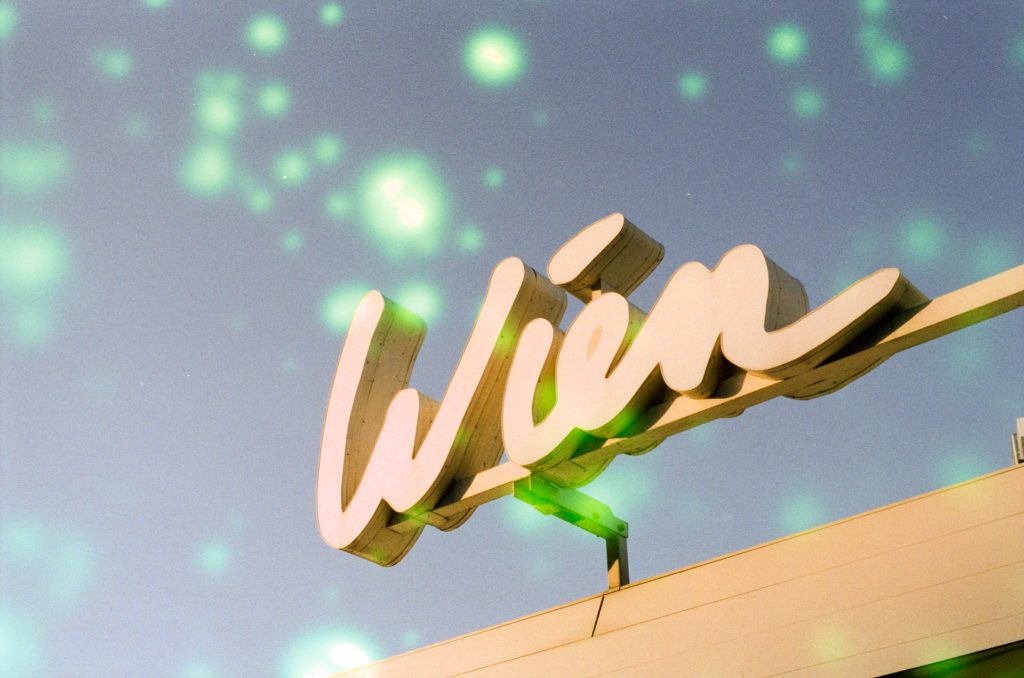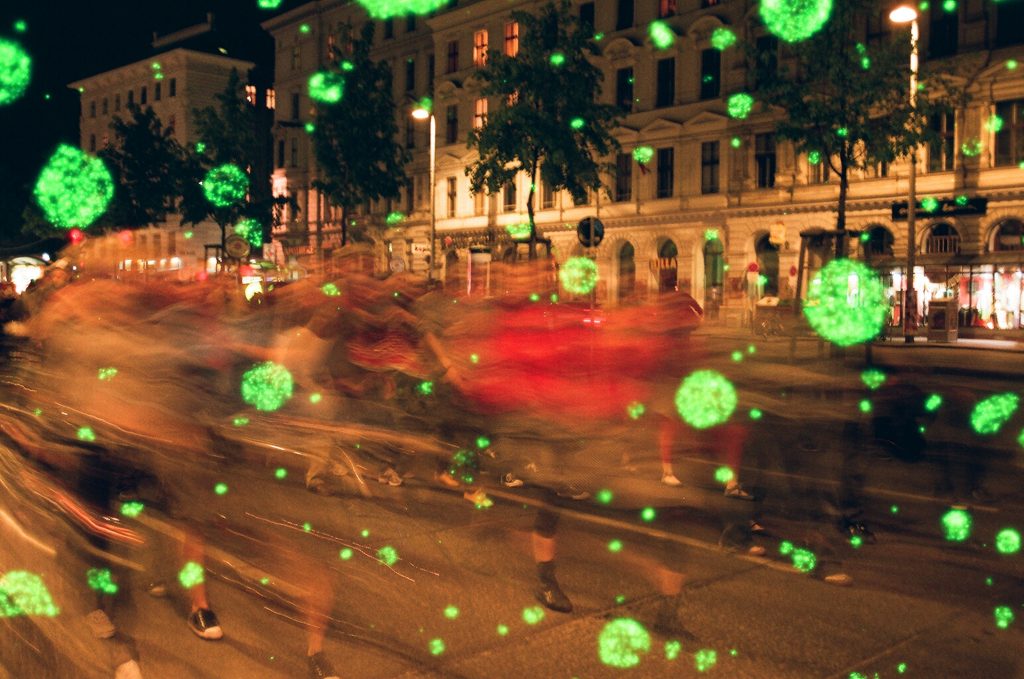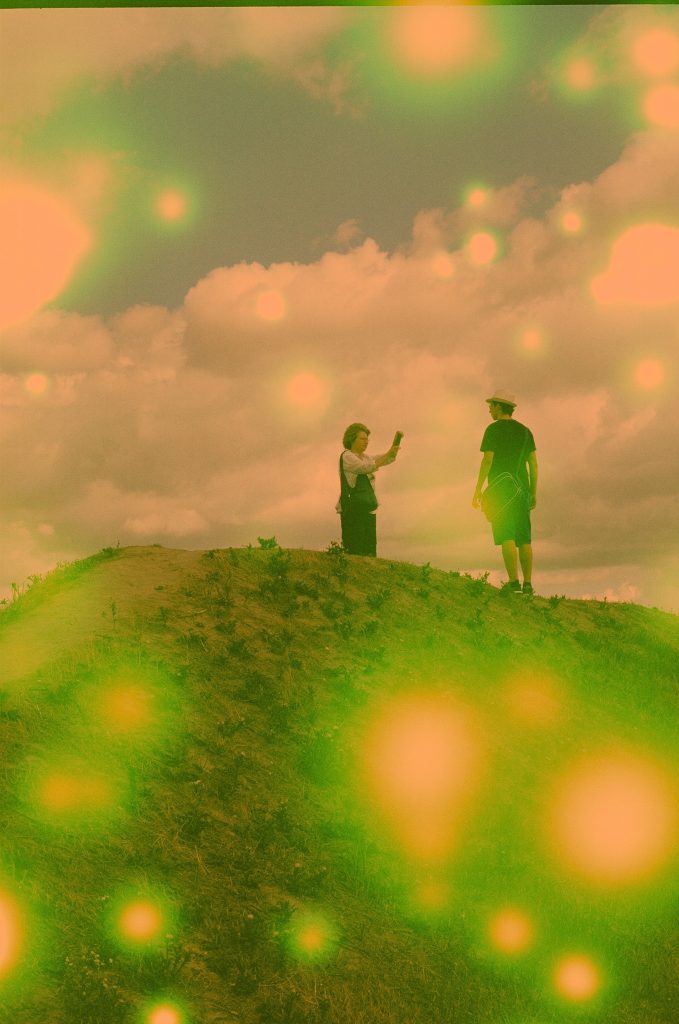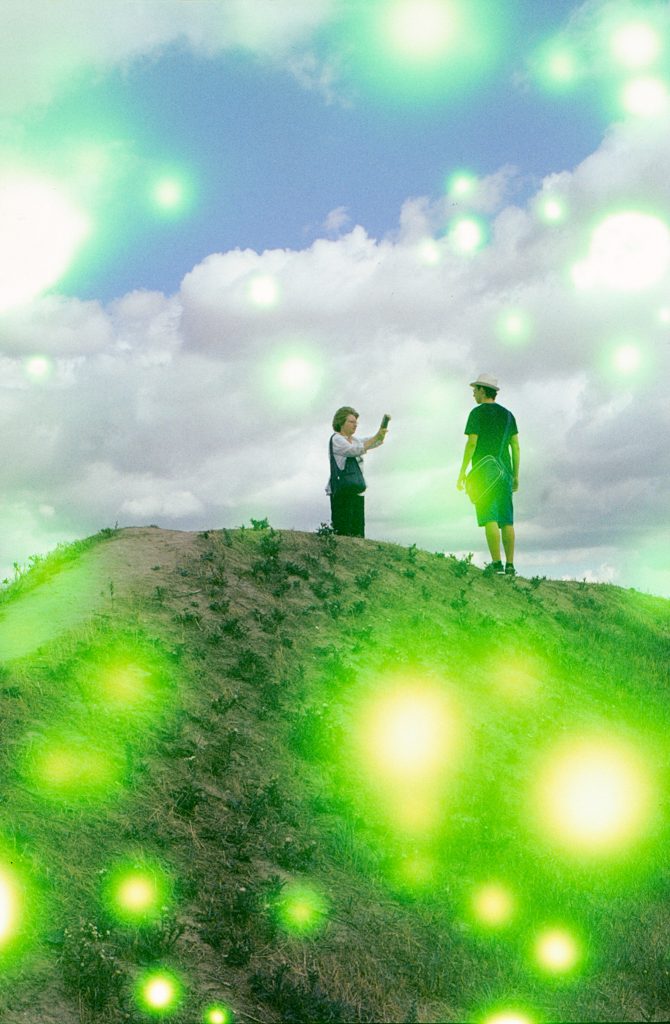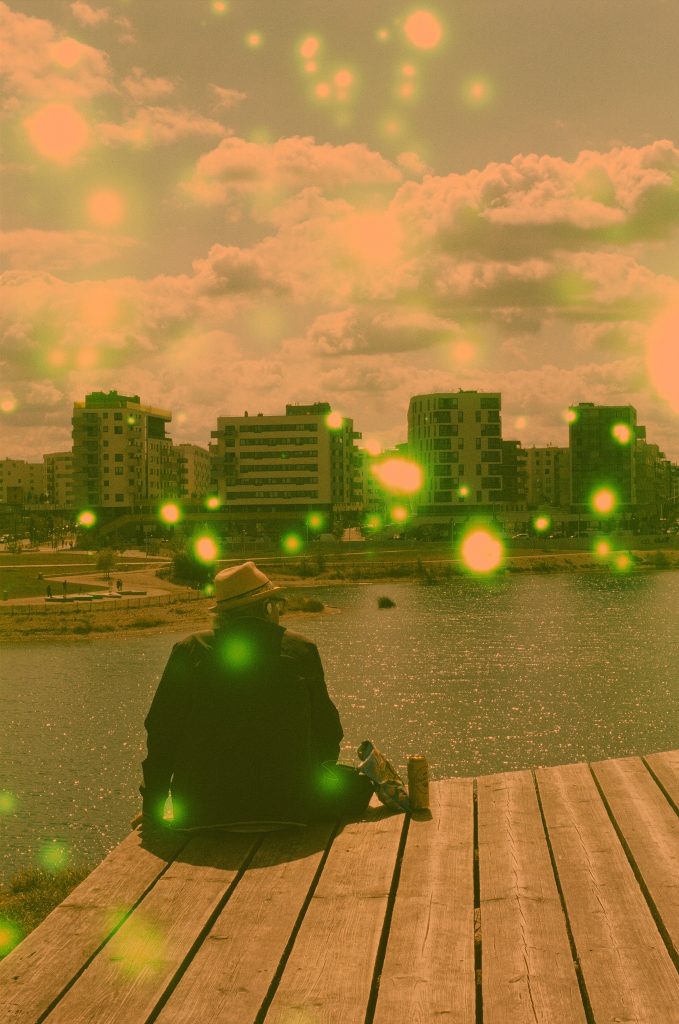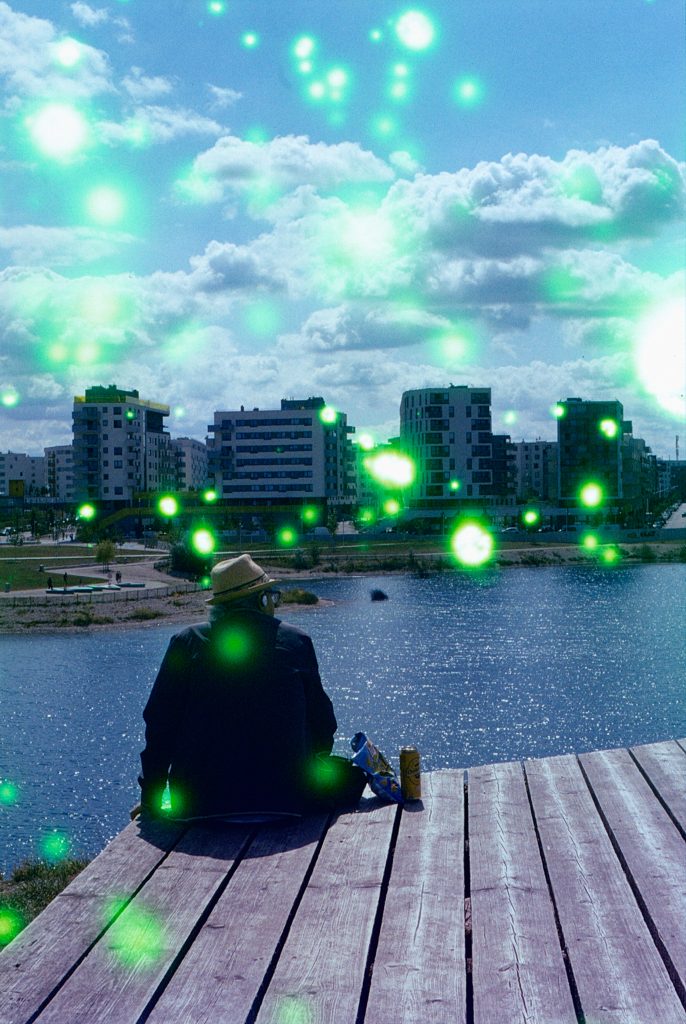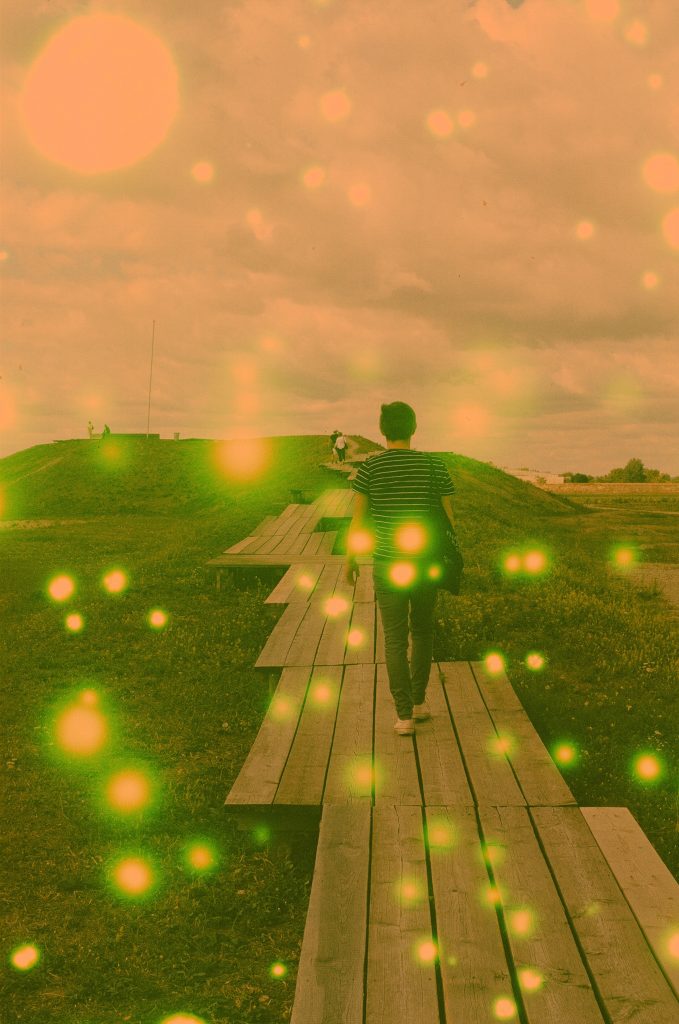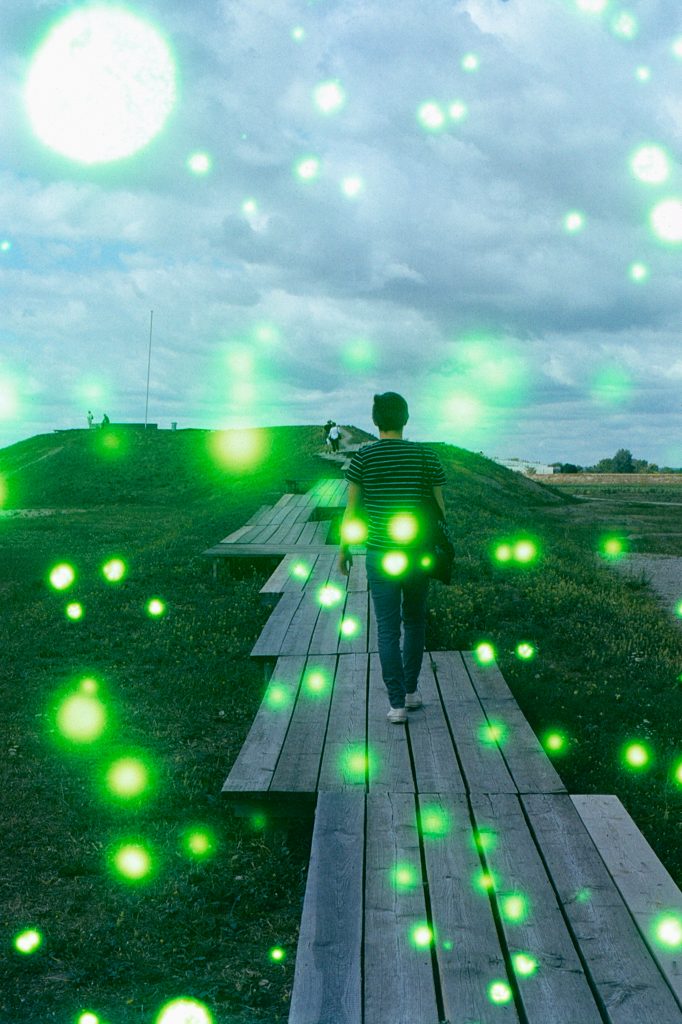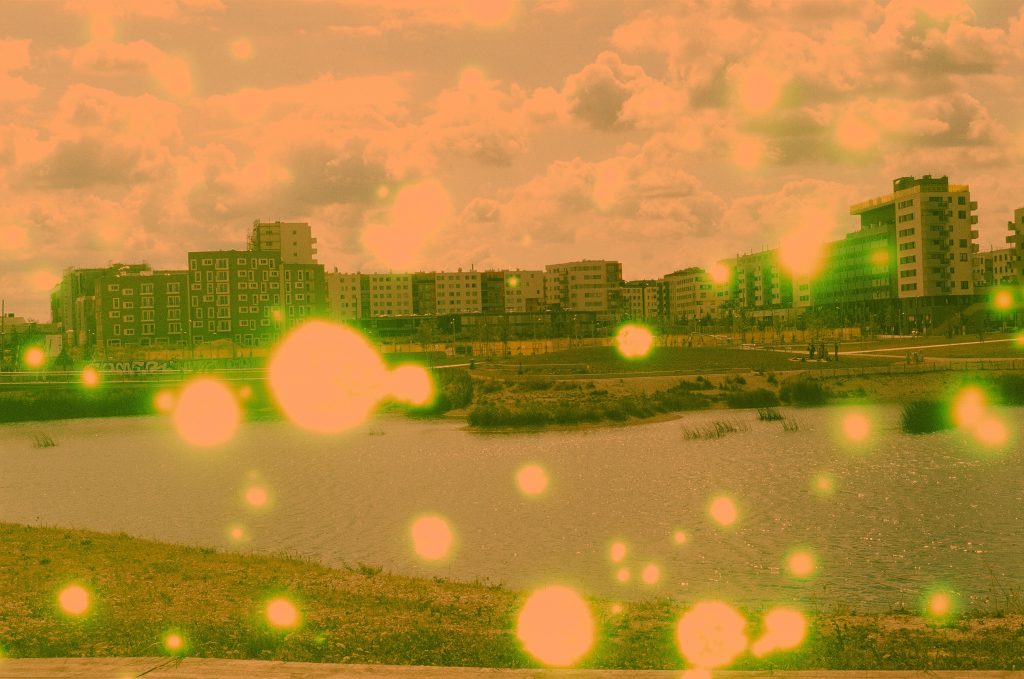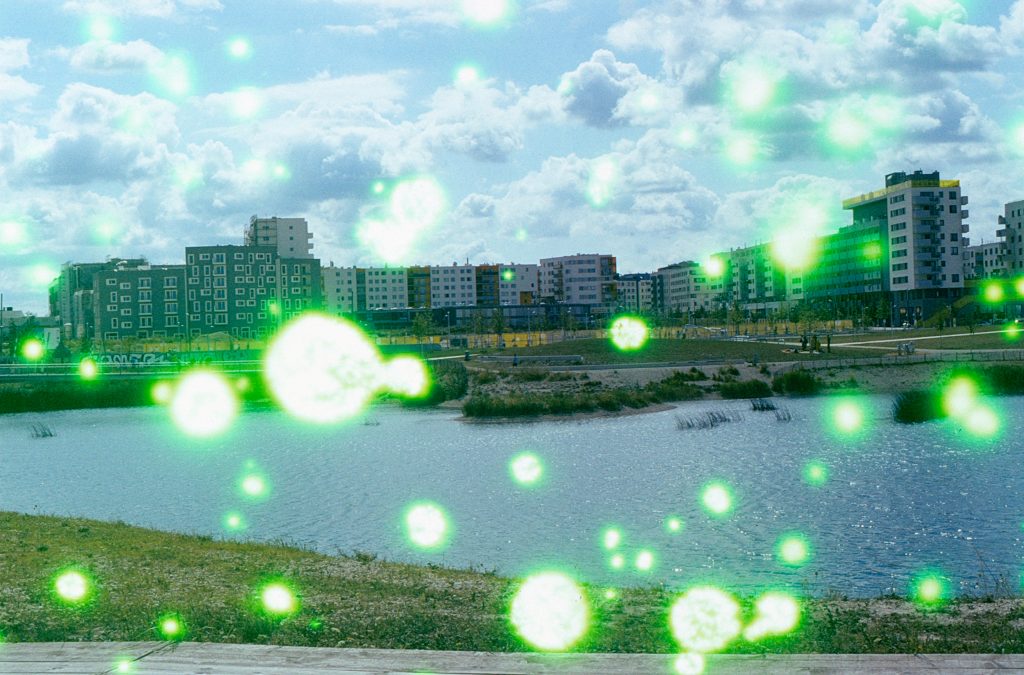The bright green label of Volvox film hints the color of the effect this cool film shows: Bright green dots in varying size and sharpness.
Film: 35mm
Type: Colour Negative
Exposures: 36
ISO: 200
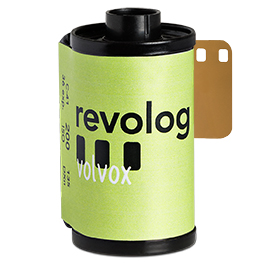
Volvox film started out as a crazy idea and we weren’t sure if we would be able to achieve the funky results we had in mind.
Nevertheless, after a couple of months of tweaking and testing we were able to figure out how we could create this film. It premiered to our photography colleagues at “Die Graphische” in February 2010. – Happy 10th birthday, Volvox!
With Volvox film you get bright green dots in different shapes and sizes all over your photographs.
The dots are more visible in darker parts of the image and can give the picture a slight 3D effect.
Volvox makes your night shots look like they were taken in a field of glowworms, gives your party pictures that certain edge they normally lack, and even makes shots of a family dinner suddenly seem extravagant.
Over / Under Exposure

F +3 
F +2 
F+2


F -1 
F -2 
F -3
The effect of the film is stronger visible in underexposed images. Be careful, as underexposure might cause your motif to be overwhelmed by the effect.
We recommend normal exposure or overexposing to max. one stop to get the best results)
Some labs might have a problem with the white balance and your images might have a magenta hue; this can easily be corrected with automated color correction in standard picture editing software (even on your phone!)

Without color correction 
With automated color correction
Volvox film can add a great mood to your portrait photographs, but bear in mind that the dots might appear anywhere in the image, possibly covering the eyes of the person you want to photograph.
Nevertheless, Volvox is a perfect film for all kinds of scenarios.
Going experimental – Volvox film cross processed
Cross processing is a technique, where you develop film in a chemical that is not intended to be developed in. Usually that means developing slide film in negative film chemistry (C-41), but it can also be done the other way around, developing negative film in slide film chemistry (E-6).
When you develop colour negative film in E-6 chemistry there is the disadvantage of the orange hue that comes from the orange colour “mask” which was designed to help in the printing process. If you decide to cross process a colour negative film it is wise to have a film scanner handy, as you might be able to tweak the colour of the processed negative in your preferred way.
The following examples were taken on a sunny day in August in Seestadt Aspern, Vienna with a Minolta X-300 camera at normal exposure.

Lab Scan 
Silverfast Scan 
Lab Scan 
Silverfast Scan 
Lab Scan 
Silverfast Scan 
Lab Scan 
Silverfast Scan
The scans we received from the lab had a strong orange hue that covered all of the pictures, but the details are still visible and the effect appears stong. The auto-color corrected rescans that we made with our Epson V750pro and Silverfast software are low in contrast, but are absolutely usable.
Want to give Volvox film a try? With the code TRYVOLVOX you’ll get 20% off of Volvox film in our shop until January 31st.



